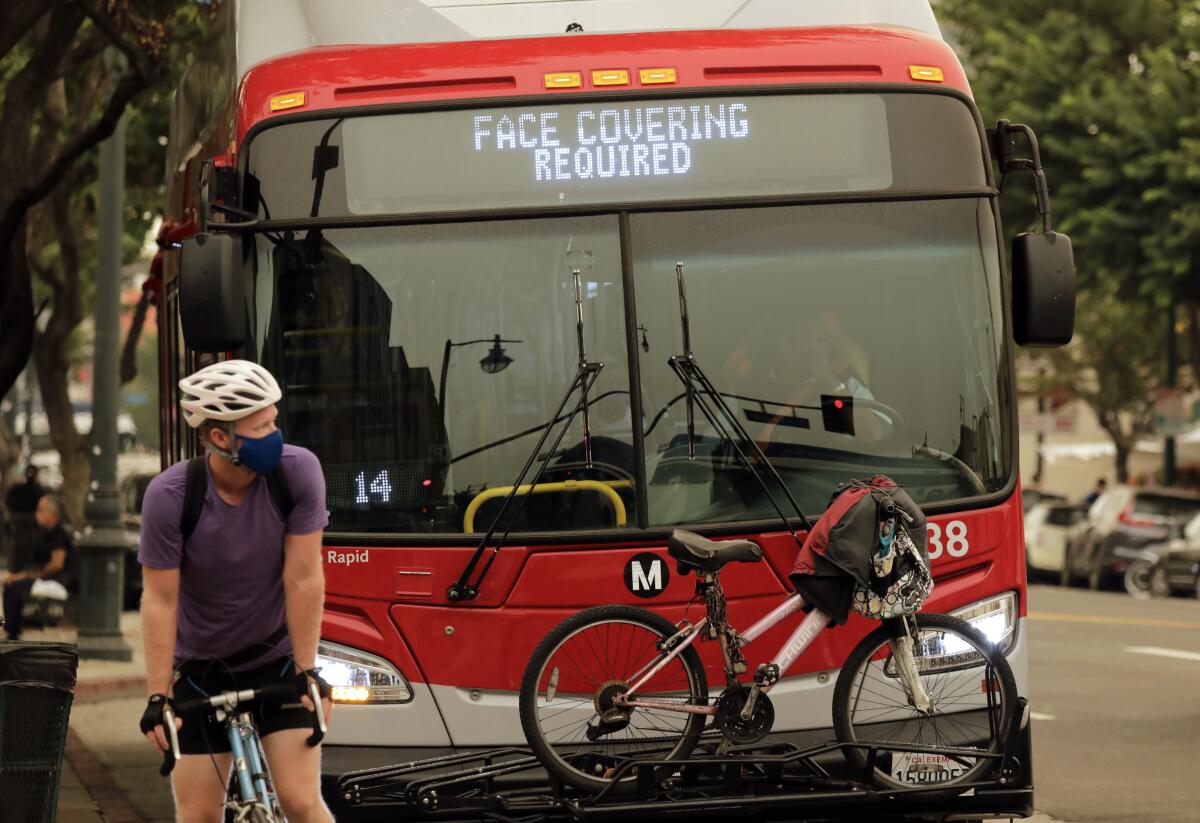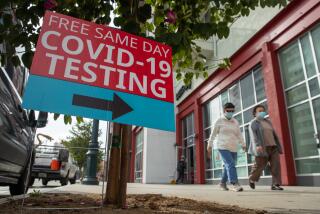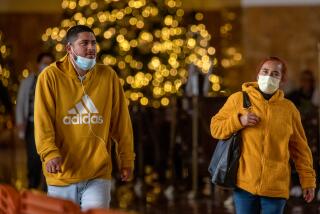L.A. officials warn against lifting COVID-19 restrictions until a review of Labor Day weekend data

California’s COVID-19 case count and hospitalizations are declining, but L.A. County’s top public health official still isn’t ready to ease up on restrictions.
Public Health Director Barbara Ferrer on Tuesday warned that lifting restrictions before getting an accurate picture on infection rates following the Labor Day holiday weekend could prove detrimental.
“It would be foolish to start reopenings now, only to have to close down because our numbers are moving in the wrong direction,” said Ferrer at the Los Angeles County Board of Supervisors meeting. She was addressing questions from supervisors and the public regarding the ongoing closures of indoor malls and other businesses that, under state guidelines, are allowed to reopen with restrictions.
The increasing pressure to reopen comes amid signs that the pandemic is in retreat. But the county has yet to show enough progress to lift most restrictions.
The county, which has recorded more than 254,680 infections and 6,274 deaths, has a seven-day average for positive infections of 4.3%. While that number could move it from Tier 1 for widespread risk of transmission to Tier 2 for substantial risk, the daily case count is 8.1 per 100,000 people — still too high to move from the state’s most restrictive tier. Additionally, county Health Services Director Dr. Christina Ghaly said that thousands of testing appointments have gone unfilled in recent weeks, all while the county is pushing for residents to get tested following the holiday.
Ferrer noted that roughly 500,000 people visited L.A. County bars during the first week they were reopened on June 18. By July 1, the case count had jumped to 2,000 cases a day. That surge has also been connected to Memorial Day weekend and a blanket reopening strategy in the county that led to a major resurgence in activity.
While wineries and breweries can open outdoor operations in counties in the state’s most restrictive level, L.A. County has not yet made the allowance. Ferrer said that places where drinking is a focal point often prompt co-mingling at a greater level than eateries, and pose a greater risk of increasing transmission.
Once a county progresses from one tier to another, it can still move backwards, but it’s unclear how quickly. San Diego County, for example, is currently reporting a case count that doesn’t meet its tier requirements. But state Health and Human Services Director Dr. Mark Ghaly said Tuesday that the county, which has been on Tier 2 for two weeks, has not yet moved back to Tier 1.
State officials are working with San Diego County to understand what led to the increase, which appears to be driven in part by a surge in cases at San Diego State University, while taking concerns from local communities into consideration before making any changes.
“Certainly, as we see the ups and downs of transmission we should expect a county to move to a more restrictive tier,” Mark Ghaly said.
When the state launched its new reopening system, officials said that a county must hold steady with a tier’s metrics — which focus on a seven day average of positive infections and case count by population size — for three consecutive weeks before progressing. But there is no clear timeline for how long it might take to move backwards through the tiered system if a county does not meet those required data points.
Also, a county must remain on Tier 2 for at least two consecutive weeks before it’s allowed to reopen all schools.
The state’s new system has prompted questions about why certain sectors are allowed to open before others. Most recently, the California Fitness Alliance, which represents nearly 300 businesses, filed a lawsuit against Gov. Gavin Newsom’s measures, arguing that the fitness industry has been unfairly targeted. The state’s current rules allow fitness centers to begin opening indoor services at minimal capacity once a county reaches Tier 2.
As is the case in L.A. County, a county can always choose to impose further restrictions beyond the state’s prohibitions.
More to Read
Sign up for Essential California
The most important California stories and recommendations in your inbox every morning.
You may occasionally receive promotional content from the Los Angeles Times.










